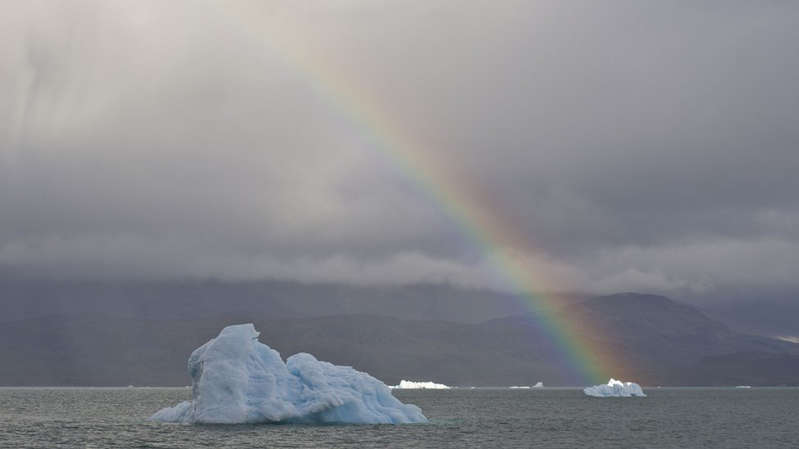Scientists from Denmark and Sweden say they accidentally discovered a new island off the coast of Greenland, which has become the northernmost land mass on the planet.
In July of this year, a research team went to collect samples in the area of the island of Oodaak, which is still considered the northernmost in the world. Its existence has been known since 1978, but several expeditions in subsequent years could not find it.
Scientists say that the movement of ice in the area constantly leads to the appearance and disappearance of new islands of soil. Some experts do not consider them islands at all, but call them “accumulations of gravel on sea ice.”
“There were six of us in the small helicopter,” the group's scientific leader Morten Rush of the University of Copenhagen told the BBC. “When we reached where Oodaak was supposed to be, we did not find him there.” The scientist explains that the maps are not very accurate for this part of the world.
- Swimming under the ice: why does a British extreme swim in Antarctica and the Arctic
- 1800 km Ice Hiking: Completed an Epic Arctic Hike
- Why is north on top of maps?
“So we started looking for the island. After a few very exciting minutes, we landed in a strange area covered with mud, no vegetation, glacial deposits and gravel. It was surrounded by the sea on all sides. Rush continues.
At first, the scientists decided that they still visited Oodaake. But after returning to the base, they checked the exact location of the discovered site with Danish officials in charge of accounting for the Arctic islands, and realized that this was a completely new island: it is located 780 meters northwest of Oodaak.
At the same time, nothing is reported about the fate of the island of Oodaak – it is possible that it disappeared under the surface of the water.
“The northernmost land”
“After the expedition, we discussed this issue for a long time with specialized specialists and now, at last, we realized that we had completely accidentally discovered the northernmost island in the world,” says Rush.
The task of the scientific group, according to the scientist, was to study the island and search for new species that adapt to life in this extreme environment.

The disappearance and appearance of islands near Greenland is associated with the movement of ice
He adds that from a scientific point of view, this discovery is of little value. “But from a personal point of view, it is, of course, amusing to be one of six people in the world who trampled on the northernmost part of the Earth with their dirty boots,” the scientist admits.
Scientists who discovered the new island suggest calling it “Kekertak Avannarleg” – in Greenlandic it means “the northernmost land”.
The area of the new island is only 60 by 30 meters. Scientists assume that its appearance is caused by the movement of ice in this region of the Arctic and has no direct connection with the reduction of the Greenland ice cover due to global warming.
Professor René Forsberg of the Danish National Space Institute told Reuters that this part of the ocean north of Greenland has one of the thickest ice sheets in the region.
However, according to Forsberg, now the thickness of the ice in the summer there is 2-3 meters, compared with four meters, which were recorded in 1978, when the scientist took part in the expedition that discovered Oodaak.
Forsberg does not believe that the opening of the new island will somehow affect Denmark's territorial claims to this part of the Arctic.
Indeed, the territory of a country can change depending on the presence of islands, that is, land areas that do not disappear under water at high tide. “It meets the criteria for an island,” Forsberg agrees. “It is currently the northernmost part of the Earth.”
“But these small islands are constantly appearing and disappearing,” he explains why Denmark should not hope to expand its territorial waters in the Arctic.

